Introduction
Teenage years can be a whirlwind of change, pressure, and emotion. In today’s fast-moving, tech-driven world, stress and anxiety among adolescents are skyrocketing. But there’s one ancient yet powerful tool that is transforming how young people cope with mental strain — mindfulness. Practicing mindfulness helps teenagers slow down, reconnect with themselves, and build inner strength to face life’s challenges with clarity and calmness. At Kaahe, we’ve seen first-hand how mindfulness can elevate mental wellbeing in schools, homes, and communities.

In this blog, we’ll explore 5 powerful mindfulness practices for teenagers — based on what we teach in our workshops across India. With simple, engaging methods, you’ll see how mindfulness isn’t about sitting silently for hours, but about being fully present and emotionally resilient in everyday moments. These mindfulness practices for teenagers are life-changing tools for their emotional and mental wellbeing.
Meet Rahul: A Story of Overthinking and Discovery
Rahul, a 16-year-old student from a school in Nainital, was known for being bright and creative — but lately, he had trouble focusing in class. He was constantly anxious about exams, comparing himself to peers, and spending sleepless nights overthinking “what if” scenarios. During one of Kaahe’s mindfulness sessions at his school, Rahul learned a technique called “anchor breathing.” At first, he was skeptical. But after trying it every day for a week, he noticed something remarkable — his mind felt lighter, his sleep improved, and he no longer panicked before tests.
Rahul’s story mirrors that of many teenagers. With consistent practice, even 5–10 minutes a day, mindfulness helps teens feel more in control, grounded, and mentally healthier. Let’s now explore the most effective techniques you can introduce to teens — at home, in classrooms, or in group settings. These mindfulness practices for teenagers are simple yet deeply impactful.
1. Anchor Breathing: Your Inner Calm Button
One of the easiest and most effective mindfulness practices for teenagers is anchor breathing. It teaches the mind to focus on the rhythm of the breath — the most accessible anchor we all have. This calms the nervous system, reduces anxious thoughts, and builds awareness.
How to do it: Ask the teen to sit comfortably, close their eyes, and place a hand on their chest or stomach. Guide them to take slow, deep breaths — in through the nose, out through the mouth — while silently saying, “I’m breathing in… I’m breathing out.” Encourage them to notice how the body moves with each breath, and gently bring the mind back if it wanders.
Even just 3–5 minutes of anchor breathing before an exam, public speaking, or bedtime can reduce stress significantly. At Kaahe, we often begin every workshop with this practice to help students center themselves. It’s one of the most practical mindfulness practices for teenagers to use in stressful situations.
2. The 5-4-3-2-1 Grounding Technique
Many teenagers struggle with anxiety attacks or racing thoughts, especially before performance tasks like tests or competitions. The 5-4-3-2-1 grounding exercise is a quick mindfulness method that brings attention back to the present using the five senses.
Here’s how it works:
- 5 things you can see
- 4 things you can touch
- 3 things you can hear
- 2 things you can smell
- 1 thing you can taste
This activity only takes a few minutes but works wonders in interrupting the spiral of anxious thinking. It’s especially useful in school corridors, exam halls, or when facing peer pressure. Teachers can introduce it as a pre-class ritual or quick break activity to reset students’ focus.
3. Mindful Walking: Turn Movement Into Meditation
Not all mindfulness happens sitting still. Mindful walking is a dynamic way to build awareness through movement. Teens who feel restless or have excess energy benefit greatly from this practice.
How it’s done: Take students outdoors or even into a large hallway. Ask them to walk slowly and notice the sensation of their feet lifting, moving, and landing. Guide them to focus on the rhythm, balance, and breath while walking. If thoughts drift, gently bring the attention back to the feet.
At Kaahe’s nature-based retreats, mindful walking through forests or fields creates a calming and immersive experience. Schools can include this as part of physical education, or host “mindful strolls” during breaks. It’s perfect for students who dislike traditional seated meditation.
4. Body Scan Meditation: Awareness from Head to Toe
Body scan meditation helps teens tune into physical sensations and release tension they didn’t even know they were carrying. It’s great for reducing physical stress stored in the body from long school days, sports, or screen time.
How to practice: Ask students to lie down or sit comfortably. Begin by directing their attention to their toes, and slowly guide them to move their awareness upward — to the feet, legs, stomach, chest, arms, neck, and head. At each point, invite them to notice sensations without judgment.
This exercise works well during rest periods, after intense classes, or at bedtime. Some teachers play audio versions with calming music to guide students. It’s one of the best mindfulness practices to help with both anxiety and sleep hygiene in teens.
5. Gratitude Journaling: Mindfulness Through Reflection
Practicing mindfulness isn’t just about breathing or noticing — it’s also about appreciating the present moment. Gratitude journaling helps teens recognize what’s going right in their lives, shifting focus away from comparison and complaints.
Try this: Encourage students to write 3 things they’re grateful for every day. These can be simple — like a friend who listened, a good meal, or a sunny walk to school. The act of writing shifts the brain toward positivity and trains attention on the good.
At Kaahe, we distribute pocket-size Gratitude Cards where students jot down a gratitude note daily. Teachers can also create a “Gratitude Wall” in classrooms where students anonymously post their notes. It cultivates a more mindful, appreciative, and connected class environment.
How Schools Can Integrate Mindfulness
Mindfulness works best when practiced regularly — not just once during a wellness week. Schools can adopt small, sustainable habits that embed mindfulness into the culture:
- Start the day with 2-minute breathwork or silence
- Assign journaling prompts during English or value education classes
- Include mindfulness activities in life skills periods
- Train peer mentors to guide younger students in grounding techniques
Partnering with organizations like Kaahe ensures access to trained facilitators, curated modules, and age-specific workshops. Whether it’s a single session or a 4-week course, consistency is key. These everyday routines reinforce mindfulness practices for teenagers in a natural and engaging way.
How Parents Can Support Mindfulness at Home
Parents play a huge role in reinforcing mindfulness. You don’t need to be an expert — just practice together. Create a “calm corner” at home with a mat, soft lighting, and calming objects. Do simple breathing exercises with your teen before bedtime. Reflect at dinner with questions like, “What was your favorite moment today?”
Model mindfulness by slowing down your own responses. Instead of reacting to your teen’s frustration, take a breath and respond with curiosity. Teens mirror emotional regulation when they see it in action. Mindfulness practices for teenagers are more effective when the entire family participates in small mindful habits.
Conclusion
Mindfulness practices for teenagers can be the turning point between mental chaos and inner clarity. From Rahul’s anchor breathing to gratitude journaling in classrooms, these tools don’t require fancy apps or long retreats — just intention, space, and a little guidance. In a world constantly pulling teens in different directions, mindfulness helps them return to themselves.
At Kaahe, we’re proud to bring mindfulness to schools and communities, one breath at a time. The results are visible — calmer classrooms, more reflective students, and emotionally stronger youth.
🌿 Bring Mindfulness to Your School with Kaahe
Ready to help your students develop clarity, calm, and confidence? Connect with Kaahe for experiential workshops on mindfulness and mental well-being tailored for teens.

